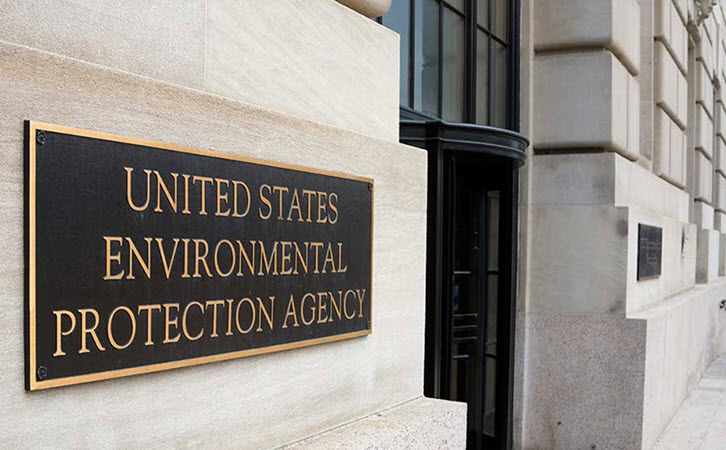EPA Announces FY2020-2023 Priorities for Enforcement
07/02/2019

EPA recently announced its enforcement and compliance assurance priorities for fiscal years 2020 to 2023. There are seven priority areas in total for this period, six of which are National Compliance Initiatives (NCIs), which will be led by EPA’s Office of Enforcement and Compliance Assurance.
The seven priority areas are:
- Creating cleaner air for communities by reducing emissions of harmful pollutants from stationary sources. The focus will be on reducing emissions of volatile organic compounds (VOCs) and hazardous air pollutants (HAPs), with an emphasis on sources EPA considers to have a significant impact on air quality and health in communities.
- Reducing hazardous air emissions from hazardous waste facilities. The focus in this area will be on improving compliance by hazardous waste treatment storage and disposal facilities (TSDFs) with regulations requiring control and monitoring of organic air emissions from waste management operations.
- Stopping aftermarket defeat devices for vehicles and engines. This initiative will focus on stopping the manufacture, sale, and installation of aftermarket defeat devices and engines used on public roads as well as on nonroad vehicles and engines.
- Reducing significant noncompliance with National Pollutant Discharge Elimination System (NPDES) Permits. This goal targets a reduction in the percentage of permittees in significant noncompliance with permitting requirements.
- Reducing noncompliance with drinking water standards at Community Water Systems (CWSs). The objective is to support the Agency’s strategic plan goal of reducing the number of CWSs that are out of compliance with health-based standards.
- Reducing risks of accidental releases at industrial and chemical facilities. This initiative will focus on reducing risk to human health and the environment by decreasing the likelihood of chemical accidents at facilities subject to Risk Management Plan (RMP) requirements as outlined in Clean Air Act Section 112(r). Facilities subject to the RMP rule are generally also subject to OSHA’s Process Safety Management (PSM) standard, and need to have Management of Change (MOC) procedures in place to ensure that plant management does not change a process involving a hazardous chemical without first assessing all risks and putting proper workflow approvals in place to maintain safety.
- Reducing lead exposures and associated health impacts. This is the only initiative that is not associated with an NCI, since there is already an outline of specific goals in the Federal Lead Action Plan. Agency-wide efforts associated with this initiative include increasing compliance with and awareness of the Renovation, Repair and Painting (RRP) rule, developing a mapping tool to identify communities with elevated lead exposures, conducting targeted geographic initiatives, and doing public awareness campaigns about lead.
EPA believes that these initiatives will improve their ability to focus their resources on “addressing significant environmental problems and risks to human health.” While they note that their enforcement and compliance assurance program focuses on desired outcomes rather than on specific industry sectors, some sectors will certainly be affected by these initiatives more than others. For example, facilities that use clean-up solvents would be affected by the initiative to reduce VOC emissions from stationary sources, and many larger manufacturing facilities would fall into that category. A chemical manufacturing facility could likely find itself covered by several of these initiatives, including those for stationary sources, NPDES, and reduction of accidental chemical release incidents – in the latter case, because of the likely applicability of EPA’s RMP rule to their operations.
One major takeaway from this announcement is that companies will need to have detailed familiarity with their operations and their chemical inventory. For example, they will need to know which products they use contain ingredients defined as VOCs or HAPs, which means they need visibility of their chemical inventory at the ingredient level, and preferably an easy way of identifying VOCs and HAPs within their facilities.
Chemical facilities also need a robust MOC program they can use to manage planned changes to operations involving highly hazardous chemicals subject to RMP and PSM requirements, and be better prepared for potential EPA inspections under the initiative to reduce accidental chemical releases.
Let VelocityEHS Help!
If your operations put you in the cross-hairs of EPA’s inspection priorities, now is a great time to make sure there are no gaps in your chemical management practices and regulatory compliance.
Knowing your chemical inventory is a key starting point. MSDSonline SDS & Chemical management solutions offer easy management of your chemical inventory and SDS library, and the ability to provide 24/7 access to SDSs to your entire workforce right from their mobile device with the MSDSonline SDS & Chemical Management Mobile App. Ingredient indexing features are even available to make your entire chemical inventory visible at the ingredient level, and provide capability to flag chemicals subject to specific regulatory standards, including EPA’s list of HAPs and chemicals subject to RMP requirements.
If you are subject to RMP requirements, our award-winning Management of Change solution gives you the ability to seamlessly manage workflows and approvals for changes to covered chemical processes and related operations. You can also generate a clean audit trail to help improve your own management as well as demonstrate compliance in the event of an EPA inspection. Want to learn more about MOC best practices? Check out our on-demand webinar Management of Change (MOC): Strategies for Compliance.
If you’re looking for additional guidance on how to maintain compliance for stormwater discharges covered under a NPDES permit, be sure to check out our on-demand webinar on Stormwater Management Programs.
VelocityEHS offers a comprehensive suite of software solutions that can help you simplify virtually every aspect of EHS management. Contact us or Request a Demo today to find out how we can help you ensure regulatory compliance, and build a safer and more sustainable workplace.






